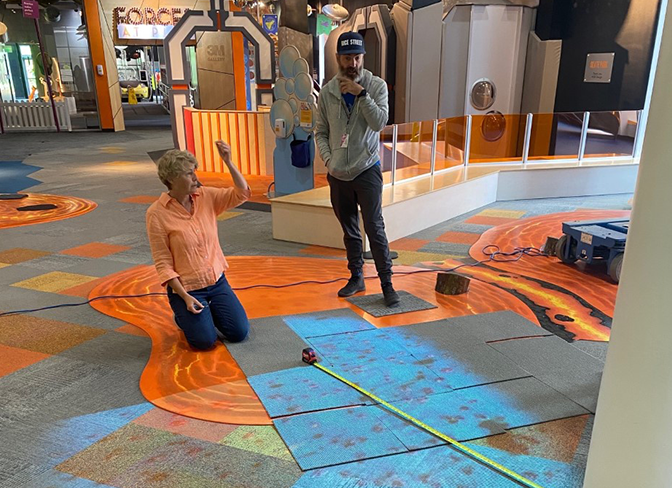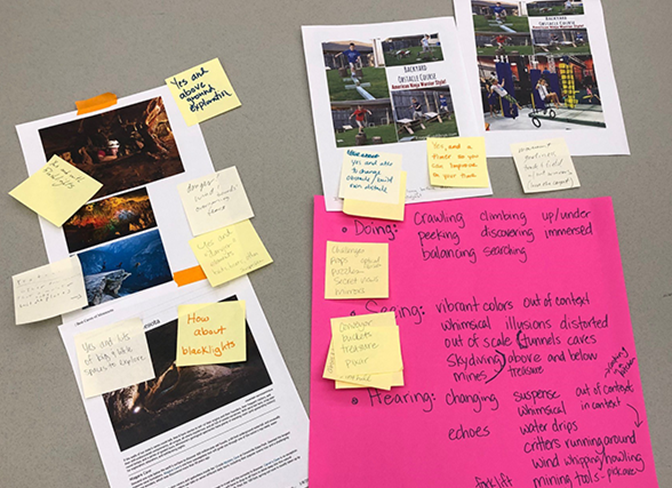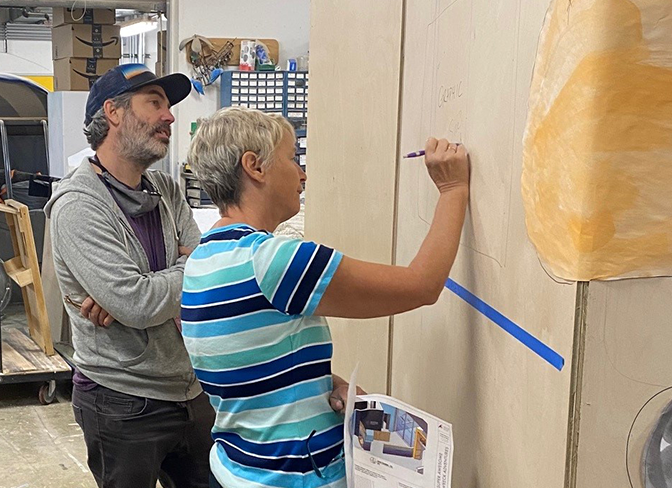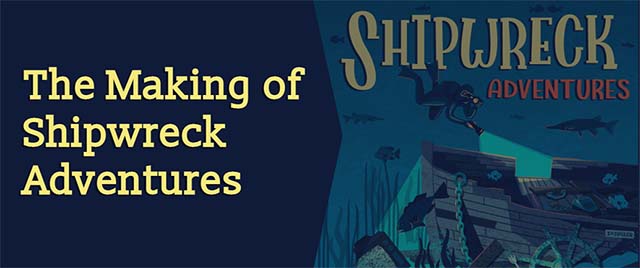The Making of Shipwreck Adventures Home
An Overview of Shipwreck Adventures
Inspiring Play: The Story of the J.S. Seaverns Shipwreck
Creating a New Museum Experience:
An Interview with Senior Exhibit Developer
Mary Weiland
Minnesota Children’s Museum is known for play. And there’s so much thought that goes into every detail of our exhibits that most people don’t ever see. Our experiences team is constantly looking for new ways to engage kids and make their experience even better. So when the museum decided to invest in creating a brand-new permanent exhibit at the museum, the team jumped right in.
We spoke with Mary Weiland, senior exhibit developer and the project lead for the new Shipwreck Adventures exhibit, about why the museum decided to add a new exhibit, how she came up with the concept and what visitors will find when they come explore.
Why are you adding a new permanent exhibit now? And where is it going to go?
Mary: When we renovated the museum in 2017, we knew we needed a space for slightly older kids. We wanted something that felt adventuresome and allowed kids to build confidence by pushing their physical risk-taking boundaries in a safe space. What we created was Super Awesome Adventures.
As a concept, it was great. The bulk of the exhibit focused on an area with hills, ramps and large props that functioned like a skate park. It was a lot of fun and did well in testing, but shortly after we re-opened, we realized that the exhibit was a bit riskier than we wanted it to be. So we started peeling components back and adjusting things, and eventually it just wasn’t the same rich experience we had intended.

Mary Weiland (kneeling) discusses exhibit details with exhibit production manager Patrick McKennan.
At the same time, we began getting visitor feedback that they were missing a more immersive play experience at the new museum – they wanted to walk into something and be surrounded by a new, imaginative world.
Both of these things led us to the realization that it was time to create something new in the Super Awesome Adventures space. Something that kept the original goals of supporting and challenging creative thinking and coordination, while incorporating the stronger immersive environments and storytelling that our visitors were asking for. And that’s how this whole project kicked off.
How did you land on the idea of a shipwreck?
Mary: The first challenge was to figure out what world we wanted to create in the space. I have a background in Minnesota history, so I was aware of all the interesting and iconic places in the state and began thinking of ways the exhibit could tap into that rich history.
The second challenge was to figure out how to incorporate some of the existing components of Super Awesome Adventures into a new exhibit. The green screen climbing wall and laser maze have always been two of our more popular areas of the museum. We needed a concept that could work those components in in a way that made sense.
I went through a number of concept ideas and eventually landed on the idea of a shipwreck in Lake Superior, which our board and leadership team loved.
In just a few sentences, what will people find in Shipwreck Adventures?
Mary: Shipwreck Adventures is a fully immersive “underwater” adventure filled with action-packed challenges and imaginative spaces. Visitors will scuba dive deep into the waters of Lake Superior and maneuver their way through a sunken pilot house and 20-foot-long ship hull, which are based on a real-life shipwreck that is still on the bottom of the lake today. They’ll also explore the lake’s shoreline, cliffs and coves, all of which incorporate whimsical interpretations of plants and animals that are native to the area.

Notes and inspiration images from an early exhibit brainstorming session.
How long does it take to create a brand-new museum exhibit?
Mary: It’s a very long process that is more involved than most people realize. It starts with months of concepting and research; coming up with big ideas and figuring out how they might come to life; diving deep into research and interviews to ensure the world we’re creating is based on authentic and accurate information; and constantly adjusting to make the exhibit even better. The museum also has a robust learning framework rooted in early childhood development that every exhibit follows, so I spend a lot of time working through how those educational objectives translate to the exhibit and which skills are most important where. I easily spend a minimum of six months just in this initial phase.
Once the concept and overall plans are in place, an exhibit designer creates detailed renderings and models of each individual component. Basically, he takes it from words and sketches on paper to something tangible that can be built. Then it goes to production, where a team of fabricators bring everything to life. That’s a simplified account of the process, as there is constant back-and-forth to figure out how to create the most amazing exhibit experience possible. In the end, most exhibits of this scale take 18-24 months to get from an initial idea to the final exhibit.
What’s your favorite part of the new Shipwreck Adventures exhibit?
Mary: That is a tough question to answer! But I suppose my favorite place is the ship hull, which is over 20 feet long. Visitors move carefully as they pretend to scuba dive around the ship while wearing a scuba diving vest and a backpack with an oxygen tank. They discover nooks and crannies, open drawers to find out more about the divers who discovered the shipwreck and encounter a room with stretchy walls and surprising underwater sounds while working together to spin barrels to make a fantastical lake creature appear.

Mary (center) suggests graphic placement on the beginning of the walls in the Cliffs and Coves section.

